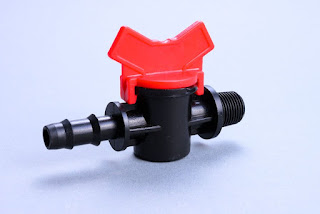The History of Chocolate Molds
Chocolate molds have a long and fascinating history that dates back centuries. These molds, used to shape liquid chocolate into various forms, have become an essential tool in the chocolate-making process. From simple shapes to intricate designs, the plastic chocolate molds have evolved over time, and their origins can be traced back to the 18th century.
The story of chocolate molds begins in Europe, where chocolate was first introduced in the 17th century. Back then, chocolate was a luxury item reserved for the elite, and it was consumed primarily in liquid form. However, as the popularity of chocolate grew, so did the demand for new and creative ways to present it.
The earliest chocolate molds were made from metal, typically copper or pewter. These molds were simple in design, consisting of two halves that were clamped together to create a hollow cavity into which the liquid chocolate was poured. Once the chocolate had cooled and solidified, the mold was opened, revealing a solid chocolate figure or shape.

In the 18th century, chocolate molds became more elaborate, with intricate designs and patterns. These molds were hand-crafted by skilled artisans and were highly sought after by chocolatiers and confectioners. They were used to create a wide range of chocolate shapes, from simple geometric forms to intricate figurines, flowers, and animals. These molds were often passed down from generation to generation and were considered prized possessions.
As technology advanced, new materials such as tin and iron were used to make chocolate molds, which made them more affordable and accessible to a wider audience. By the 19th century, chocolate molds were being mass-produced using steam-powered machines, allowing for greater precision and consistency in the final chocolate products.
In the late 19th century, the Industrial Revolution brought about significant advancements in the manufacturing of chocolate molds. With the introduction of new materials such as rubber and plastic, plastic molds for chocolate making became even more affordable and versatile. Rubber molds allowed for greater flexibility and ease of use, as they could be bent and twisted to release the solidified chocolate easily. Plastic chocolate molds, which were introduced in the mid-20th century, were lightweight, durable, and could be produced in a wide variety of shapes and sizes, making them highly popular among chocolatiers and confectioners.
The 20th century saw a boom in the production and use of chocolate molds. With the rise of mass production and modern technology, chocolate molds became more widely available and affordable to the general public. They were used not only by professional chocolatiers but also by home cooks and baking enthusiasts, allowing for greater creativity and innovation in chocolate making.
Today, chocolate molds come in countless shapes, sizes, and designs. They are made from a wide range of materials, including silicone, polycarbonate, and stainless steel. Silicone molds are flexible, easy to clean, and come in a wide variety of shapes and designs, making them popular among home cooks and baking enthusiasts. Polycarbonate molds are durable and heat-resistant, allowing for precise and consistent results, making them a favorite among professional chocolatiers. Stainless steel molds are sturdy and can withstand high temperatures, making them ideal for creating large batches of chocolate products.
In recent years, 3D printing technology has also been used to create custom chocolate molds with intricate designs and patterns that were previously impossible to achieve. This has opened up new possibilities for creativity and customization in chocolate making, allowing chocolatiers and confectioners to push the boundaries of what is possible with chocolate molds.
Chocolate Molds and Creative Gift Giving
Chocolate molds are a fun and versatile tool for creative gift giving. Here are some ideas on how you can use chocolate molds for creative gift giving:1. Personalized Chocolates: Chocolate molds come in various shapes and sizes, allowing you to create personalised chocolates with names, initials, or special messages.
2. Themed Chocolates: Chocolate molds come in a wide range of themes, such as animals, sports, holidays, and more.
3. Special Occasion Chocolates: Chocolate molds are perfect for creating chocolates that celebrate special occasions, such as weddings, baby showers, graduations, and birthdays.
4. Seasonal Chocolates: Chocolate molds can be used to create chocolates that are perfect for different seasons, such as Valentine's Day, Easter, Halloween, and Thanksgiving.
5. Gift Basket Additions: Chocolate molds can also be used to create chocolate treats that can be added to gift baskets.
Conclusion
Chocolate molds have a rich and fascinating history that dates back centuries. From their origins in Mesoamerica to their popularity in Europe during the 18th and 19th centuries, chocolate molds have played an important role in the development and evolution of the chocolate industry.Over time, plastic injection mold design has become more intricate and detailed, allowing chocolatiers to create unique and impressive confections. Today, chocolate molds remain a vital tool for creating chocolate art and continue to inspire creativity and innovation in the world of chocolate-making. Whether you're a professional injection molding maker or a home baker, chocolate molds offer endless possibilities for creating delicious and visually stunning treats.

Comments
Post a Comment